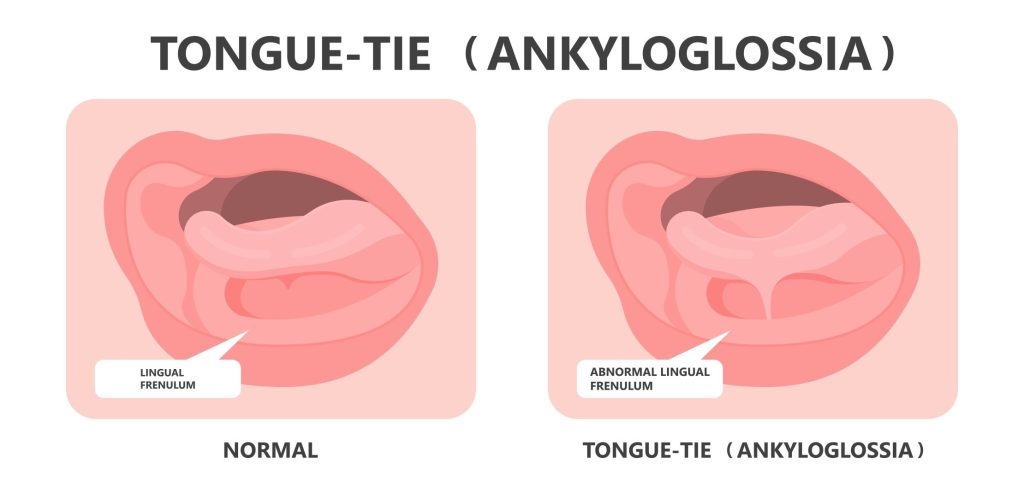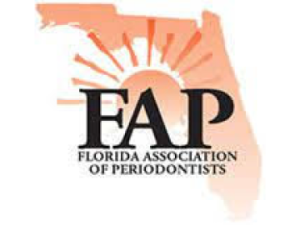Key Highlights
- Frenectomy is a surgical procedure that removes the connective tissue (frenum) under the tongue or upper gums
- It is a simple procedure that can treat conditions like lip-tie and tongue-tie
- Frenectomy can help improve breastfeeding, speech, eating, and airway issues in children and infants
- The procedure can be performed using a soft tissue laser, which offers quick healing and minimal bleeding
- After the procedure, post-care and follow-up visits are important for optimal healing and results
Introduction
Welcome to our comprehensive guide on understanding frenectomy. If you or your child is experiencing difficulties with breastfeeding, speech, eating, or other oral functions, a frenectomy may be the solution. In this guide, we will explore the basics of frenectomy, including what it is, why it may be needed, the procedure itself, post-procedure care, costs involved, potential risks, and real stories from patients who have undergone the procedure.
A frenectomy is a surgical procedure that involves removing the connective tissue, known as the frenum, that is located either under the tongue or in the upper gums. This procedure is commonly used to treat conditions such as lip-tie and tongue-tie, which can cause a range of issues in infants, children, and even adults. By understanding the basics of frenectomy, you can make informed decisions about your oral health and seek the necessary treatment if needed.
Exploring the Basics of Frenectomy
A frenectomy is a simple surgical procedure that is performed to address conditions like lip-tie and tongue-tie. There are different types of frena in the mouth, including the labial frenum, which connects the lips to the gums, and the lingual frenum, which connects the tongue to the bottom of the mouth. When these frena are too tight or restrictive, they can cause difficulties with breastfeeding, speech, eating, and other oral functions. A frenectomy involves removing or modifying the frenum to improve these issues. The procedure can be either a labial frenectomy or a lingual frenectomy, depending on the location of the problematic frenum.
Defining Frenectomy in Modern Dentistry
In modern dentistry, a frenectomy is a commonly performed surgical procedure that aims to address issues related to the frenum in the oral cavity. It is a relatively simple procedure that can be performed by a pediatric dentist or an oral surgeon. The surgical process involves removing or modifying the frenum, which is the connective tissue membrane that attaches to different surfaces within the mouth. By releasing or modifying the frenum, a frenectomy can help improve oral functions such as breastfeeding, speech, and eating. It is often recommended for individuals with conditions like lip-tie and tongue-tie, which can cause restrictions in movement and hinder proper oral function.
Differentiating Between Lingual and Labial Frenectomies
When it comes to frenectomies, there are two main types: labial frenectomy and lingual frenectomy. A labial frenectomy involves the removal or modification of the labial frenulum, which is the connective webbing that attaches the lips to the gums above the top two front teeth and below the bottom two front teeth. This type of frenectomy is often performed to address issues like lip-tie, which can cause difficulties with breastfeeding and interfere with the proper growth and spacing of the upper front teeth.
On the other hand, a lingual frenectomy focuses on the lingual frenulum, which is the vertical band of thin tissue that connects the tongue to the floor of the mouth. This type of frenectomy is commonly used to treat conditions such as tongue-tie, which can restrict the movement of the tongue and affect breastfeeding, speech, and eating. By addressing the lingual frenulum, a lingual frenectomy can help improve oral functions and overall oral health.
Identifying the Need for a Frenectomy
If you or your child is experiencing difficulties with breastfeeding, speech, or other oral functions, it may be necessary to consider a frenectomy. Tongue-tie and lip-tie are common conditions that can cause these issues. Tongue-tie refers to a restriction in the movement of the tongue due to a tight or abnormal frenulum, while lip-tie involves a similar restriction in the upper lip. These conditions can interfere with breastfeeding, affect the development of the upper front teeth, and cause speech issues. If you notice any of these symptoms or have concerns about the tightness of the frenulum, it is recommended to consult with a pediatric dentist or an oral surgeon who can evaluate the need for a frenectomy.
Common Signs Your Child May Require a Frenectomy
Several signs may indicate the need for a frenectomy in your child. One common sign is difficulty with breastfeeding, as a tight or restrictive frenulum can make it challenging for the baby to latch onto the breast properly. This can lead to poor feeding and frustration for both the baby and the mother. Another sign to look out for is speech impediments, such as difficulty pronouncing certain sounds or words. A tight frenulum can restrict the movement of the tongue and make it difficult for the child to produce certain speech sounds. Additionally, if you notice a gap between the upper front teeth or abnormal spacing, it could be a sign of a tight labial frenulum that may require a frenectomy. It is important to consult with a pediatric dentist or an oral surgeon to evaluate the need for a frenectomy based on these signs and symptoms.
The Role of Frenectomy in Speech and Eating Improvement
Frenectomy plays a crucial role in improving speech and eating functions in individuals with conditions like tongue-tie and lip-tie. By releasing or modifying the frenulum, a frenectomy allows for better tongue movement, which is essential for proper speech articulation. It helps individuals overcome speech issues caused by a restricted tongue movement. Additionally, frenectomy can improve eating habits by enhancing the range of motion of the tongue and allowing for better food manipulation and swallowing. For infants and young children, frenectomy can also promote proper growth and development of the oral cavity, ensuring that they can feed and eat comfortably. If you or your child is experiencing difficulties with speech or eating, a frenectomy may be a viable solution to improve these functions.
The Frenectomy Procedure Unveiled
A frenectomy procedure is a relatively simple and minimally invasive surgical procedure that can be performed using different techniques. Two commonly used techniques for frenectomy are laser and traditional methods. The use of soft tissue lasers in frenectomy has gained popularity due to their precision and minimal discomfort during the procedure. The laser technique involves using a focused beam of light to remove or modify the frenulum. This method offers several advantages, including minimal bleeding, faster healing, and reduced post-operative discomfort. Local anesthesia is typically used to numb the area before the procedure to ensure a comfortable experience for the patient. The choice between laser and traditional methods depends on various factors, and it is best to discuss the options with your dental professional to determine the most suitable technique for your specific case.
Preparing for a Frenectomy: Steps to Take
Before undergoing a frenectomy, it is important to schedule a consultation with a dental professional, such as a pediatric dentist or an oral surgeon, who specializes in oral surgical procedures. During the consultation, the dental professional will evaluate your specific case through a thorough examination and discuss the benefits and risks of the procedure. They will also provide you with detailed instructions on how to prepare for the frenectomy, including any pre-operative care requirements, such as fasting before the procedure. The consultation is an opportunity to address any questions or concerns you may have about the procedure. It is crucial to follow the guidance of the dental professional and provide them with accurate information about your medical history to ensure a safe and successful frenectomy.
Detailed Walkthrough of the Frenectomy Process
During the frenectomy procedure, the dental professional will perform a series of steps to remove or modify the frenulum. The process typically involves making a small incision in the frenulum to release it or using a laser to remove the tissue. The dental professional will carefully manage any bleeding during the procedure and ensure the patient’s comfort through the use of local anesthesia. The entire procedure usually takes less than 15 minutes to complete, depending on the complexity of the case. After the frenectomy, the dental professional will provide instructions for post-operative care and schedule follow-up appointments to monitor the healing process. It is important to follow these instructions meticulously to promote optimal healing and achieve the desired outcomes.
Laser vs. Traditional: Choosing the Right Technique for You
When considering a frenectomy, it is important to understand the difference between laser and traditional techniques. Laser frenectomy utilizes a soft tissue laser to remove or modify the frenulum, offering precise and minimal discomfort during the procedure. The laser cauterizes the tissue, resulting in minimal bleeding and faster healing. On the other hand, traditional frenectomy involves using a scalpel or scissors to make an incision in the frenulum. While both techniques are effective, laser frenectomy is often favored due to its advantages, such as reduced discomfort and quicker healing. The choice between laser and traditional techniques depends on the individual case and the recommendations of the dental professional. Discussing the options with your dental professional will help you make an informed decision based on your specific needs and preferences.
Post-Procedure Care and Recovery
After a frenectomy, it is important to follow proper post-procedure care and allow for adequate healing. The healing process can vary from person to person but typically takes approximately two weeks. Some discomfort and swelling may be experienced during the initial days after the procedure. Over-the-counter pain relievers, such as Tylenol, can help manage any discomfort. It is essential to stick to soft foods during the healing period to avoid any potential irritation to the surgical site. Maintaining good oral hygiene, including gentle brushing and rinsing with a saltwater solution, is also important to promote healing and prevent infection. It is crucial to attend follow-up appointments as scheduled to monitor the healing progress and ensure optimal recovery.
Immediate Aftercare Tips for Faster Recovery
To promote faster recovery after a frenectomy, there are several immediate aftercare tips that you can follow. It is normal to experience some bleeding and soreness immediately after the procedure. Placing a clean gauze pad on the surgical site and applying gentle pressure can help control bleeding. Over-the-counter pain relievers, such as Tylenol, can be taken as directed to manage any discomfort. It is important to give yourself ample time to rest and recover, avoiding any strenuous activities that may impede the healing process. Follow any additional instructions provided by your dental professional, such as rinsing with a saltwater solution or applying any prescribed topical ointments. By following these aftercare tips, you can support a faster and smoother recovery after a frenectomy.
Long-term Care Strategies to Ensure Optimal Healing
Ensuring optimal healing and long-term care after a frenectomy involves implementing certain strategies. It is important to maintain good oral hygiene by gently brushing the teeth and gums, including the surgical site. Regularly rinsing with a saltwater solution can help keep the area clean and promote healing. Paying attention to the gum tissue around the surgical site is essential, as it should gradually heal and return to a healthy state. Monitoring the growth and development of the upper front teeth, especially in children, is crucial to ensure proper alignment and spacing. Regular follow-up appointments with your dental professional are important to assess the healing progress and address any concerns or complications that may arise. By practicing proper long-term care strategies, you can support optimal healing and maintain good oral health after a frenectomy.
Understanding the Costs Involved
Understanding the costs involved in a frenectomy is an important aspect to consider. The cost of the procedure can vary depending on various factors, such as the complexity of the case and the location of the dental practice. It is recommended to check with your insurance provider regarding coverage for a frenectomy. Some insurance plans may cover the procedure partially or fully, while others may require out-of-pocket expenses. Discussing payment options and potential insurance coverage with your dental professional can help you navigate the cost aspect. It is also important to consider any additional orthodontic treatment that may be required after the frenectomy to achieve optimal results.
Breaking Down the Costs: What to Expect
The costs associated with a frenectomy can include various components. The frenectomy procedure itself may have a set cost, which can vary depending on the dental practice and the complexity of the case. Additionally, there may be a consultation fee for the initial evaluation and discussion of the treatment plan. Anesthesia, if used, can also contribute to the overall cost. It is important to inquire about these costs and discuss them with your dental professional during the consultation. This will allow you to have a clear understanding of what to expect in terms of financial obligations. Furthermore, it is recommended to check with your insurance provider regarding coverage for the frenectomy procedure to assess any potential out-of-pocket expenses.
Navigating Insurance and Payment Options
Navigating insurance and payment options for a frenectomy can be a crucial step in the process. It is recommended to contact your insurance provider and inquire about coverage for the procedure. Some dental insurance plans may cover a portion or all of the frenectomy costs, while others may require out-of-pocket expenses. It is important to understand your insurance coverage and any limitations or requirements they may have. Additionally, discussing payment options with your dental professional can provide you with further guidance on managing the financial aspect of the procedure. They may offer options such as payment plans or financing options to help make the treatment more affordable. Referrals from dental professionals or insurance providers can also help you navigate insurance coverage and find the most suitable payment options for your frenectomy.
Potential Risks and How to Mitigate Them
Like any surgical procedure, a frenectomy does carry potential risks. However, these risks are typically minimal and can be mitigated with proper care and guidance from a dental professional. Some common complications that may arise include bleeding, infection, and numbness in the surgical area. To mitigate these risks, it is important to follow the post-operative care instructions provided by your dental professional. This includes maintaining good oral hygiene, attending follow-up appointments, and avoiding activities that may impede healing. By following preventative measures and promptly reporting any concerns or complications to your dental professional, you can ensure a safe and successful frenectomy experience.
Common Complications Following a Frenectomy
Although rare, some potential complications can occur following a frenectomy. One common complication is bleeding, which can usually be managed by applying gentle pressure with a clean gauze pad. Infection is another potential complication, but it can be minimized by maintaining good oral hygiene and following the post-operative care instructions provided by your dental professional. Numbness in the surgical area is also a possibility, but it is usually temporary and resolves on its own as the healing process progresses. It is important to promptly report any persistent or concerning symptoms to your dental professional to ensure appropriate management and treatment. By being aware of these potential complications and taking the necessary precautions, you can minimize the risks and ensure a smooth recovery after a frenectomy.
Preventative Measures to Avoid Negative Outcomes
To avoid negative outcomes following a frenectomy, several preventative measures can be taken. Maintaining good oral hygiene is crucial, as it helps prevent infection and promotes optimal healing. This includes gentle brushing of the teeth and gums, including the surgical site, and rinsing with a saltwater solution as recommended by your dental professional. Attending follow-up visits as scheduled is also important, as it allows the dental professional to monitor the healing progress and address any concerns or complications that may arise. In addition, seeking pediatric care for infants and children can ensure that their oral health and development are properly managed. By following these preventative measures, you can minimize the risk of negative outcomes and promote a successful outcome after a frenectomy.
Real Stories: Before and After a Frenectomy
Real stories from individuals who have undergone a frenectomy can provide valuable insights into the transformative journeys and improvements that can be achieved through the procedure. Many patients report significant improvements in their quality of life, especially in areas such as speech and overall oral function. Frenectomy has helped individuals overcome speech impediments and achieve better articulation. Patients often share their experiences and how the procedure has positively impacted their daily activities, emotional well-being, and social interactions. These real stories serve as a source of inspiration and reassurance for individuals considering a frenectomy, highlighting the potential benefits and positive outcomes that can be achieved.
Transformative Journeys: Patients Share Their Experiences
Patient testimonials provide first-hand accounts of the transformative journeys individuals have experienced after undergoing a frenectomy. These stories often highlight the improvements in quality of life, especially in areas such as speech and overall oral function. Patients share how the procedure has helped them overcome speech impediments, enabling better articulation and communication. They express their gratitude for the positive impact the frenectomy has had on their daily activities, emotional well-being, and social interactions. Reading and listening to these personal experiences can provide reassurance and inspiration for individuals considering a frenectomy. It is important to remember that every individual’s experience may vary, and consulting with a dental professional is crucial to determine the most appropriate course of treatment for your specific case.
The Impact on Daily Life and Well-being
Undergoing a frenectomy can have a significant impact on daily life and overall well-being. Patients often report improvements in their ability to engage in daily activities, such as eating, speaking, and overall oral function. This enhanced functionality can lead to increased confidence and a sense of freedom in social interactions. Individuals who have experienced challenges with breastfeeding or speech may find relief and improved quality of life after a frenectomy. The positive impact on daily activities and emotional well-being can extend beyond the immediate post-procedure period, as the benefits of a frenectomy provide long-term improvements. It is important to consider these potential positive outcomes when evaluating the need for a frenectomy and the potential impact it can have on your daily life.
Contact Palm Beach Periodontics Today
In conclusion, understanding frenectomy is crucial for addressing various oral health issues effectively. From recognizing the need for a frenectomy to post-procedure care and recovery, every step plays a vital role in enhancing speech, eating, and overall well-being. By delving into real stories and potential risks, you gain a comprehensive insight into this dental procedure. Remember, informed decisions lead to positive outcomes. So, whether you’re considering a frenectomy for yourself or your child, this guide equips you with the knowledge needed to navigate the process with confidence and clarity. Your dental health journey starts here.
Frequently Asked Questions
Can Adults Benefit from Frenectomy?
Yes, adults can also benefit from a frenectomy. Frenectomies can address conditions such as gum recession, and orthodontic problems, and improve overall oral health and quality of life. Consult with a dental professional to determine if a frenectomy is recommended for your specific case.
How Soon Will I See Improvements Post-Frenectomy?
The healing process after a frenectomy can vary, but improvements are often noticeable within a few weeks. Speech improvement, better eating habits, and enhanced tongue movement can be seen as the healing progresses. Patience and adherence to post-operative care instructions are important for optimal results.












